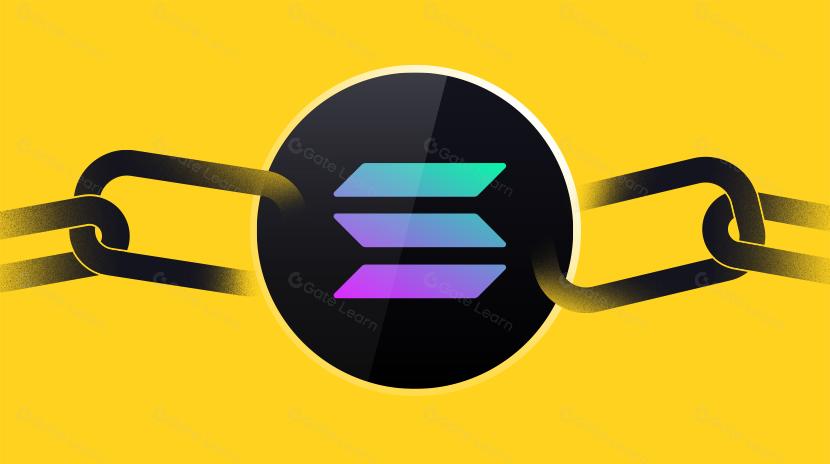Pi Network(PI)是什麼?
Pi Network 通過恆星共識協議(Stellar Consensus Protocol)實現移動加密貨幣挖礦,提供一個具有實際用途的去中心化生態系統。簡介
Pi Network 是一個基於區塊鏈的項目,用戶無需高性能計算設備,僅通過手機應用即可挖掘加密貨幣。該項目由 Nicolas Kokkalis 博士和 Chengdiao Fan 博士於 2019 年發起,目標是構建一個人人可參與的數字貨幣生態。不同於傳統依賴高能耗挖礦的加密貨幣,Pi Network 採用恆星共識協議(SCP),通過信任機制完成交易驗證。目前,該網絡已有超 4500 萬用戶,並正逐步邁向開放主網階段,以提升 Pi 加密貨幣的互操作性和實際應用價值。
Pi Network(PI)是什麼?
Pi Network 是一個加密貨幣項目,用戶可以通過手機挖掘 Pi 幣,無需高性能計算設備。該項目由斯坦福大學畢業生 Nicolas Kokkalis 博士和 Chengdiao Fan 博士於 2019 年 3 月 14 日發起,致力於讓加密貨幣挖礦變得更簡單、更普及。與傳統挖礦方式不同,Pi Network 採用輕量級手機挖礦模式,不會消耗設備性能或電池壽命。
Pi Network 採用恆星共識協議(SCP)作為核心機制。SCP 通過聯邦拜占庭協議,實現快速且低成本的交易處理。其網絡由“先驅者”(Pioneers)組成,用戶可以建立信任關係形成安全圈,構建全球信任圖譜,從而增強網絡安全性,同時避免傳統 PoW 挖礦的高能耗問題。
Pi Network 的發展經歷了多個關鍵階段:
- 第一階段(Phase I):始於 2018 年 12 月,發佈移動應用程序作為 Alpha 版本,吸引早期用戶加入。
- 第二階段(Phase II):於 2020 年 3 月 14 日啟動,推出了全球分佈式節點的實時測試網(Testnet),支持開發者使用 Test-Pi 代幣構建去中心化應用(DApp)。
- 第三階段(Phase III,封閉主網):於 2021 年 12 月開啟,允許用戶完成身份驗證(KYC)並將 Pi 遷移至正式主網區塊鏈。
- 開放主網階段(Open Mainnet):於 2025 年 2 月 20 日啟動,移除了網絡防火牆,實現對外部網絡和錢包的連接。
據報道,截至 2025 年 2 月,Pi Network 的全球用戶超過 7000 萬。隨著開放主網的啟動,Pi 加密貨幣進入可交易階段,價格波動較大。最初交易價格高於 1 美元,但隨後經歷了劇烈的下跌和反彈,反映出市場的波動性。Pi Network 通過其獨特的移動挖礦方式和對可及性的重視,實現了用戶群的快速增長。
儘管 Pi Network 發展迅速,但仍面臨透明度和中心化問題的批評。外界對開發團隊的匿名性以及未公開的源代碼提出質疑,認為這阻礙了外部對區塊鏈完整性的驗證。此外,該項目依賴於邀請機制進行用戶增長,這種模式讓 Pi Network 被質疑類似於金字塔騙局(Pyramid Scheme),因為用戶通過邀請新成員獲取 Pi 代幣。另外,KYC 過程中用戶數據的安全性以及生態系統的中心化控制也引發了安全擔憂。
Pi Network 主要功能
手機挖礦

Pi Network 允許用戶(稱為 Pioneers)直接通過智能手機挖掘 Pi 代幣,而無需消耗大量能源。Pi 挖礦應用程序可在 iOS 和 Android 設備上使用,作為用戶與網絡交互的主要界面。用戶通過每日簽到即可挖掘 Pi,同時可以管理餘額,並建立安全圈以增強網絡安全性。該應用還提供網絡公告和社區論壇,促進用戶互動和學習。目前,該網絡的活躍用戶已超過 5500 萬。
Pi Network 主網區塊鏈

Pi Network 已從早期測試階段進入主網階段,允許用戶將移動端挖掘的 Pi 遷移至主網區塊鏈,並在 Pi 生態內進行交易和消費。目前,主網仍處於封閉網絡階段,重點推進大規模 KYC 認證和生態系統建設。預計 2025 年 2 月 20 日,開放網絡將正式上線,屆時 Pi 幣將可在更廣泛的區塊鏈網絡和應用場景中使用。
開發者生態系統

Pi Network 為開發者提供友好的環境,支持 dApp(去中心化應用)開發,並鼓勵構建豐富的生態系統。開發者可以直接面向 6000 萬+ Pioneers 用戶,為其應用獲取大量潛在用戶。平臺提供了多種開發工具和資源,包括與 Pi 瀏覽器的無縫集成,以及對多種編程語言的支持,使 dApp 開發更加便捷。
KYC 認證流程
為確保網絡的安全性和真實性,Pi Network 推行 KYC(身份認證)機制。用戶需要通過 KYC 驗證,才能將挖掘的 Pi 遷移至主網並全面參與生態。目前,已有超 1800 萬名 Pioneers 完成身份認證,其中 800 萬+ 已成功遷移至主網。
Pi 節點與去中心化發展
Pi Network 通過去中心化節點系統,提升網絡的穩定性和安全性。用戶可以在個人電腦上運行 Pi 節點,協助驗證交易並保障網絡安全。這些節點基於恆星共識協議(SCP)運行,通過建立信任組達成交易共識。
生態應用場景
Pi Network 不僅僅是一個挖礦平臺,還在積極拓展 Pi 幣的實際應用價值。通過支持 dApp 生態,Pi 貨幣可用於多個領域,包括電商、社交平臺和金融服務,讓 Pi 具備更廣泛的使用場景。
社交互動體驗
Pi Network 深知社區對項目發展的重要性,因此集成了社交功能,讓用戶能更緊密地互動。Pi 社交檔案允許用戶個性化個人主頁,展示社交活動,並與其他 Pioneers 交流互動。
邁向開放網絡
Pi Network 計劃於 2025 年 2 月 20 日進入開放網絡階段,這是其發展的重要里程碑。該階段將移除現有的網絡防火牆,實現外部互聯,使 Pi 代幣能夠與其他合規的區塊鏈網絡和系統交互。
Pi 黑客鬆
Pi Network 組織的 Pi 黑客鬆 是一項長期進行的開發者活動,旨在推動 Pi 生態系統內的去中心化應用(dApp)開發。該活動為開發者提供機會,讓他們構建創新應用,提升 Pi 貨幣的實際用途,同時促進社區互動。
活動機制與參與方式
Pi 黑客鬆每月舉辦一次,開發者可通過 Brainstorm 應用提交項目。提交的應用會由龐大的 Pi 社區(超過數千萬用戶)進行審核和反饋。每月的獲勝項目可獲得 10,000 Pi 獎勵,並享有更高的曝光率。此外,所有參與項目都有機會獲得 Pi 核心團隊的額外支持,優秀作品可能會被納入 Pi 瀏覽器測試網生態。
主題與目標
每次 Pi黑客鬆都圍繞特定主題展開,推動 Pi 生態的多元化發展。例如,2024 年的 Pi Commerce 黑客鬆 重點開發連接本地商家與 Pi 用戶的應用,使 Pi 貨幣能夠更廣泛地用於實際交易。該主題是對 Pi 社區活動(如 PiFest)需求的直接回應,反映了用戶對基於 Pi 交易平臺的迫切需求。
資源與支持
為了幫助開發者,Pi Network 提供了一系列資源,包括:
- 開發者入門指南:幫助新手快速熟悉 Pi 生態開發環境。
- Pi 平臺 GitHub 代碼庫:提供 Pi SDK 和 API 的詳細文檔。
- Pi Demo App 代碼庫:包含示例代碼,幫助開發者快速上手。
- Pi 開源協議(PiOS):闡述與 Pi 相關的開源規則和使用許可。
- 研討會(Workshops):圍繞 Pi SDK 開發和產品設計,提供實踐培訓和指導。
黑客鬆的亮點成果
Pi黑客鬆促成了多個有影響力的應用誕生,豐富了 Pi 生態,例如:
- Map of Pi:一個可視化平臺,幫助用戶查找支持 Pi 支付的商家。
- PyNook:商家友好的線上店鋪工具,支持 Pi 交易。
- Daabia Mall:一個在線商城,涵蓋多種商品,推動不同地區 Pi 生態的發展。
開發者參與
想要參加 Pi 黑客鬆 的開發者可以先下載 Pi App 並註冊賬戶。Pi 瀏覽器內的 Brainstorm 應用 是 黑客鬆 相關活動的核心平臺,開發者可在此提交項目、組建團隊並進行協作。
Pi Network vs. 其他競爭對手
Pi Network 採用手機挖礦模式,使其區別於傳統加密貨幣項目。然而,它也面臨其他專注於可及性、能源效率和去中心化金融(DeFi)的競爭項目。以下是 Pi Network 與 Bee Network、Electroneum 和 Chia 的對比分析。
Pi Network vs. Bee Network

Pi Network 和 Bee Network 採用相似的移動挖礦模式,用戶可通過每日簽到與應用互動來賺取代幣。兩者均依賴社區驅動增長,即通過邀請新用戶來擴大網絡。然而,Pi Network 在開發進度上更進一步,已啟動封閉主網並開展 KYC 認證,而 Bee Network 仍處於主網前階段,尚未公佈主網計劃。。
另一個關鍵區別是治理模式。Pi Network 逐步引入治理機制,儘管仍存在中心化的擔憂。而 Bee Network 目前尚未提供去中心化治理的具體計劃。此外,Pi Network 已開始在其生態系統中集成去中心化應用(dApps),而 Bee Network 仍缺乏可用於現實交易的生態系統。
Pi Network vs. Electroneum
Electroneum 專注於金融普惠,特別是在新興市場提供移動友好的加密貨幣支付服務。與 Pi Network 不同,Electroneum 已擁有活躍的區塊鏈及支付系統,用戶可以使用 ETN 購買商品和服務。而 Pi Network 仍處於封閉主網階段,外部交易受限。
在共識機制上,Pi Network 採用基於信任的挖礦模式,即恆星共識協議(SCP);而 Electroneum 最初使用工作量證明(PoW),後轉為修改版的責任證明(PoR)。PoR 允許授權驗證者高效挖礦 ETN,同時降低能源消耗。
Pi Network vs. Chia
Chia Network 採用獨特的 空間與時間證明(PoST) 機制,要求用戶分配硬盤空間來驗證交易。這與 Pi Network 的移動挖礦方式有很大不同,後者僅需智能手機,無需額外硬件資源。儘管 Chia 宣稱自己是工作量證明(PoW)加密貨幣的環保替代方案,但其挖礦仍需大量存儲空間,導致硬件成本高昂。而 Pi Network 通過簡化挖礦門檻,使普通用戶更容易參與。
Chia 目前擁有完整的主網,並且其原生代幣 XCH 可在市場上流通交易,而 Pi Network 仍處於封閉階段,外部交易尚未開放。此外,Chia 採用開源開發模式,並鼓勵社區治理,其治理結構更加透明,而 Pi Network 仍由核心團隊集中管理。
Pi Network 的技術架構
共識機制
Pi Network 採用 恆星共識協議(SCP),這是一種無需高計算成本的共識機制,確保交易安全的同時提升處理速度。不同於 PoW(工作量證明)或 PoS(權益證明),SCP 讓節點在不依賴高性能計算的情況下達成共識。Pi Network 通過安全圈機制,用戶可邀請可信賴的朋友加入安全圈,形成信任網絡,從而保障交易真實性並加強整體安全。
節點結構與角色
Pi Network 生態系統由以下角色組成:
- Pioneers(先驅者): 通過每日登錄 Pi App 進行挖礦的普通用戶。
- Contributors(貢獻者): 負責建立安全圈,提高網絡的安全性和信任度。
- Ambassadors(推廣者): 通過邀請新用戶幫助網絡增長。
- Nodes(節點): 運行 Pi Network 軟件,負責維護區塊鏈並參與共識驗證。
移動挖礦與能源效率
Pi Network 允許用戶通過移動設備挖掘加密貨幣,而不會消耗大量能源。通過採用 SCP 和安全圈機制,網絡能夠高效驗證交易,使用戶可以通過每日使用應用來挖掘 Pi 幣。這種方式讓更多人可以公平參與加密貨幣挖礦,無需專門的硬件設備。
安全性與信任模型
Pi Network 通過安全圈機制維護網絡安全,用戶可添加值得信賴的成員,共同構建全球信任網絡。這些相互連接的信任圈確保交易由可靠的參與者驗證,從而減少欺詐行為,提升網絡的完整性。
可擴展性考慮
隨著 Pi Network 規模的擴大,可擴展性成為技術架構的重要因素。基於 SCP 的共識機制能夠支持更高的交易量,同時保持處理速度與安全性。網絡的持續優化工作正致力於提升性能,以適應更龐大的用戶群體和交易負載。
去中心化進展
Pi Network 計劃通過逐步將控制權從核心團隊轉移至社區,來實現完全去中心化。這一過程包括鼓勵更多用戶運行節點,以分散網絡的治理與驗證工作。去中心化不僅增強了安全性,還符合區塊鏈技術的核心原則。
與現有技術的集成
Pi Network 的架構可順暢對接現有技術,移動應用可直接與區塊鏈交互,使用戶能夠便捷地挖礦和交易 Pi 幣。其基礎設施支持與其他區塊鏈平臺的互操作性,推動更廣泛的應用和採用。
未來發展
展望未來,Pi Network 計劃推出智能合約功能,使開發者能夠在其平臺上構建去中心化應用(dApps)。這一擴展將進一步增強網絡能力,為用戶提供更豐富的服務和應用場景,完善 Pi 生態系統。
Pi Network 爭議:透明度、治理模式與經濟機制
Pi Network 在透明度和去中心化問題上備受爭議。儘管官方宣稱其是一個去中心化區塊鏈項目,但目前 所有活躍的主網節點仍由核心團隊掌控,這讓外界對其真正的去中心化程度產生懷疑。此外,Pi Network 未公開源代碼,外部開發者無法獨立審查區塊鏈的安全性和完整性,導致透明度問題備受質疑。
該項目的 經濟模式 也是爭議焦點之一。據稱,Pi Network 核心團隊持有大量 Pi 代幣,有估計表明,他們掌控 1000 億總供應量中的 936 億。
Pi Network 的 治理架構 也遭到批評,因為它缺乏 社區驅動的決策機制。與其他去中心化區塊鏈項目依靠社區共識治理不同,Pi Network 仍由其團隊控制著大部分網絡運營。這種中心化模式與區塊鏈倡導的 去中心化理念 相悖,使外界對該項目真正實現去中心化的承諾表示懷疑。
此外,Pi Network 強制要求用戶完成 KYC(身份認證),需提交個人身份文件,但其 數據安全措施 仍然不透明。2021 年,安全分析師發現用戶信息被傳輸到 Pi Network 的 中心化服務器,這可能帶來 身份盜竊和欺詐 的風險。
什麼是 PI 代幣?
PI 代幣的功能
在 Pi Network 生態系統中,PI 代幣具有多種用途:
- 交易媒介:用戶可以使用 Pi 代幣在網絡內購買商品和服務,促進內部經濟循環。
- 激勵機制:活躍用戶,包括挖礦者、邀請新用戶的成員以及運行節點的用戶,都可以獲得 PI 代幣獎勵,以鼓勵持續參與並增強網絡安全性。
- 開發者資源:開發者需要 PI 代幣來訪問和部署 Pi 網絡上的 dApp,推動平臺創新和實用性擴展。
PI 供應與分配

Pi 代幣的總供應量上限為 1000 億枚,分配如下:
- 挖礦獎勵(65%):約 650 億 Pi 用於獎勵移動挖礦、邀請新用戶以及運行節點的用戶。
- 生態發展(10%):約 100 億 Pi 預留用於支持社區項目、資助 dApp 開發,並增強整個生態系統。
- 流動性池(5%):約 50 億 Pi 用於 Pi 網絡內部交易的流動性支持。
- 核心團隊(20%):200 億 Pi 分配給 Pi 核心團隊,作為其開發工作和網絡維護的補償。該部分採用歸屬(Vesting)機制,與社區的代幣分配同步進行。
PI 代幣歸屬計劃
核心團隊分配的 200 億 Pi 代幣遵循歸屬計劃,其釋放時間與社區代幣分配同步。該機制確保團隊利益與網絡增長保持一致,以促進長期發展和承諾。
Pi Network 的經濟設計
Pi Network 的經濟模型在可及性、供應管理和長期價值之間尋求平衡。其採用逐步降低發行量的挖礦模式,即根據每月的代幣供應限制,動態調整全網基礎挖礦速率。這一機制確保隨著網絡接近供應上限,挖礦速率逐步下降,從而避免無止境的通脹增長。
Pi Network 的治理模式
Pi Network 的治理結構旨在平衡中心化管理與社區參與,以構建一個安全且包容的生態系統。核心團隊由項目創始人和主要開發人員組成,負責監督重要的決策流程。這種中心化模式在 Pi Network 的開發階段發揮了關鍵作用,確保網絡能夠穩定推進,並高效地實施各項功能。
然而,這種中心化治理也引發了社區和區塊鏈專家的擔憂。批評者指出,核心團隊仍然掌控著網絡的大部分節點和基礎設施,這與區塊鏈技術所倡導的去中心化理念相矛盾。此外,源代碼未公開,進一步加劇了社區對透明度和外部審查的擔憂,限制了第三方對網絡完整性的驗證。
為了解決這些問題,Pi Network 計劃逐步過渡到更去中心化的治理模式。這一計劃將引入社區參與機制,例如 基於智能合約的投票系統,讓用戶能夠提出建議、討論決策,並對協議變更、新功能和網絡規則進行投票。通過分散治理權限,Pi Network 旨在實現更加公平的社區自治,提高透明度,並增強用戶對網絡的信任度。
結論
Pi Network 通過 SCP 共識機制 構建了一個移動端優先的加密貨幣生態,實現了低能耗的挖礦和高效交易驗證。目前,Pi Network 擁有數百萬活躍用戶,並持續推進開發者生態和多種應用,以增強 Pi 代幣的實際使用價值。雖然治理仍然由 核心團隊 負責,但 Pi Network 計劃逐步引入社區治理,讓用戶參與決策。即將開啟的 開放網絡階段將提升 Pi 生態的互通性,並拓展其在現實世界中的應用。同時,智能合約、去中心化應用(dApps)和生態整合的推進,將決定 Pi Network 未來的發展前景。
相關文章

Solana需要 L2 和應用程式鏈?

Sui:使用者如何利用其速度、安全性和可擴充性?

什麼是中本聰同步?您需要瞭解的有關 SSNC 的所有資訊

錯誤的鉻擴展程式竊取分析

在哪種敘事中最受歡迎的掉落?


